
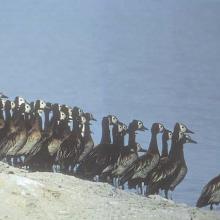


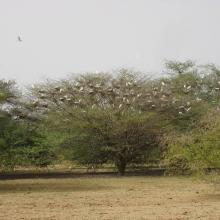
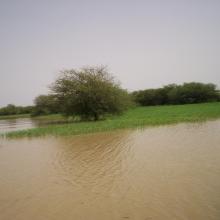
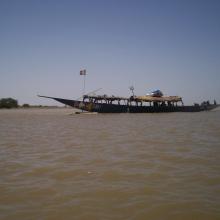
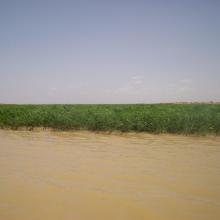
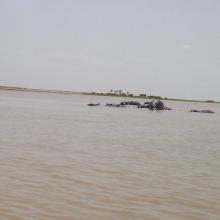
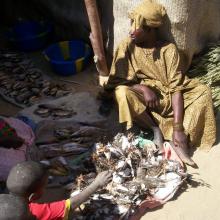
Delta Intérieur du Niger
- Pays:Mali
- Numéro du site:1365
- Superficie:4'119'500 ha
- Date d’inscription:01-02-2004
- Coordonnées:15°12'N 04°06'W
Le matériel présenté sur ce site web, et en particulier les cartes et l’information territoriale, est tel qu’il apparaît dans les données disponibles et n’implique en aucune manière l’expression d’une opinion quelconque de la part du Secrétariat de la Convention de Ramsar concernant le statut juridique de tout pays, territoire, ville ou zone, ou de ses autorités, ou concernant la délimitation de ses frontières ou limites.
Panorama
Delta Intérieur du Niger. 01/02/04; Mopti, Ségou, Tomboctou; 4,119,500 ha; 15°12'N 004°06'W. A vast floodplain situated in the middle of sahelian landscape, rich in natural resources and featuring varied ecosystems (lakes, forest floodplains, flooded grasslands and savannah). It is the largest inland wetland in West Africa and the second largest wetland in Africa, after the Okavanga Delta in Botswana. It supports an exceptionally high number of animal and plants species and is a refuge for many migratory birds, hosting more than 350 species, with 103 waterfowl species listed between 1998 and 2001. Each year more than 1 million birds come from more than 80 countries to use the delta. Several watery sites of the Inner Niger Delta are important for the survival of reptiles such as the Sebae or rock python (Python sebae), the Nile varan (Varanus niloticus), cobras (Naja sp.), vipers (Bitis arientens) and also many amphibians. The hippopotamus (Hippopotamus amphibius) and the manatee (Trichechus senegalensis), both species registered on the IUCN's Red List of the threatened species, are still extant, although now threatened in the delta. The richness of fishes in the delta is another important feature, with some 138 species, 24 of which are endemic. Nearly one million people live on the resources of the delta ecosystems, by agriculture, farming, fishing, crop, navigation, tourism, etc. The Inner Niger Delta is the source of the emergence of the big empires of the 8th to 16th centuries (Ghana, Mali, Songhoy), then of the theocratic States of Sékou, Ahmadou and Elhadj Omar Tall. Numerous historic cities like Hamdallayi (ancient capital of the Dina), Djenné, Dia and Bandiagara are important economic, political and cultural centers today. The historic city of Djenné and the cliffs of Bandiagara have been on UNESCO's World Cultural and Natural Heritage lists since 1989. Ramsar site no. 1365. Most recent RIS information: 2004. Note: The Delta Intérieur de Niger site incorporates the former Ramsar Sites of Lac Horo, Séri, and Walado Debo / Lac Debo, designated on 25/05/87.
Région administrative:
Mopti,Tomboctou, Ségou
- Inscriptions légales internationales générales:
- Bien du patrimoine mondial
- Inscription légale nationale:
- Local convention for the management of the Akkagoun forest
- Local convention for the management of the Dentaka forest
- Local convention for the management of the grazing areas in the Tombouctou region
- Local convention on the protection of Balearica pavonina in the Seri plain
- Several other local conventions on fishery, grazing areas, agriculture and collecting areas
- Date de dernière publication:01-02-2004
Téléchargements
Fiche descriptive Ramsar (FDR)
Carte du site
Rapports et documents complémentaires
- Tistes taxonomiques d'espèces de plantes et d'animaux présents dans le site
- Autre littérature publiée
